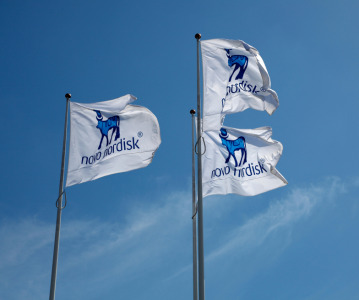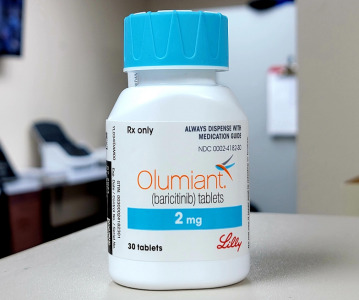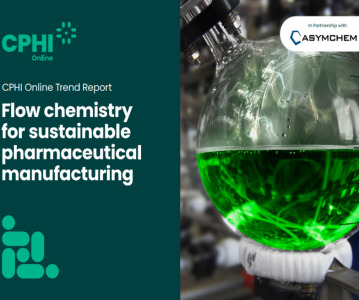CPHI Milan Speaker Spotlight: Pharma Manufacturing and Localisation in Africa
.png)
In the run-up to CPHI Milan, we sit down with some of the experts and thought-leaders speaking at this year’s conferences.
Robert Matiru, Director, Programme Division at UNITAID, spoke with us on his participation on the panel “Pharma Manufacturing in Emerging Markets – Towards Localisation in Africa?” and the opportunities and challenges for manufacturers both in emerging markets and those looking to expand their global reach.
1. The continent of Africa is seeing unprecedented growth in life science partnerships and investment. What is currently driving this growth?
There are a number of factors driving this growth. The first that comes to mind is a rising demand for healthcare. Africa as a continent has many countries with rapidly growing populations and these countries also have high degrees of urbanisation. These two factors are changing disease patterns, and generating demand for healthcare services and products at a level not seen before. These also link with economic growth – while many countries in Africa are considered low-income countries, their economic growth is on the rise. With that, there’s an ability for the acquisition of services for health and healthcare. Some governments don’t necessarily have established social health insurance schemes and a lot of health products are acquired through the private sector. But that does mean that there has been a rising demand to address these needs relative to the last 10-20 years, and we’re seeing a lot more government initiatives and policies prioritising healthcare and life sciences. In every region of the continent, you’re going to see these initiatives growing, such as those in Egypt, Morocco, Kenya, Rwanda, and South Africa.
We also see more investment in R&D in the life sciences sector in Africa as well, again relative to the last 10-15 years. To a varying degree, we’re also seeing more access to funding and capital being unlocked, and with that growth in venture capital funds, grants, and impact investing are more opportunities for the life sciences sector to grow.
2. What are the current opportunities for local institutions as well as global investors in Africa?
For local institutions, one of the top opportunities is research and development. In many countries in Africa, there are more research institutions that can focus on innovation than in the past, driving innovation, creating IP, and enhancing competitiveness. Of course, this requires public and private partnerships, and even global/national partnerships to enable these local institutions to grow their capacity and ability to invest in R&D. If you take Senegal for example, the Pasteur Institute of Dakar are collaborating with multiple entities globally to develop vaccines and rapid diagnostic tests, and what is driving that collaboration is R&D. They are also looking at partnerships with institutes in the Global North and elsewhere – in Kenya, there’s the Kenya Medical Research Institute, in Uganda you have the Makerere University, and in South Africa, there is a long list of leading universities driving innovation in R&D. This is all to say there’s a number of countries that are pushing the needle on building homegrown and locally based R&D centres.
Building local capacity for manufacturing, distribution, and regulation is also key. Trends following the end of COVID-19 aim to bolster local and regional production. National independence, health security in the economic and health industry – these are real opportunities to leverage momentum and build local capacity not just for manufacturing but for associated sectors such as regulation. One essential factor here is intra-country movement of goods. The African Continental free Trade agreement has great potential to facilitate supply chains in going beyond regional borders and even continental.
For global investors, there are a number of top opportunities building on what I’ve mentioned. The growing market demand in Africa brings an associated demand for healthcare products and services, enabling global investors unbridled opportunities to tap into the pharmaceutical, medical devices, diagnostics, and other health services markets. Africa is home to a wide range of emerging markets and untapped potential. Looking at economic statistics, African countries dominate the list of the world’s fastest-growing economies in 2024 according to the African Development Bank. This is really positive in terms of opportunities for global investors. The markets are not mature but if investors can tap into these markets, they can help drive them in a way that is not found in more developed health sector markets.
3. What challenges does the African pharma market still face in harnessing and strengthening collaborative opportunities?
On one hand, the regulatory environment in Africa is highly variable, and in many cases not very well developed. There are only six national regulatory authorities at the WHO-listed maturity level three. We need to get to a place where many more national regulators are reaching maturity Levels 3 and 4 in terms of linked functional regulatory systems, harmonisation, and reliance. 55 countries on one continent cannot become maturity Level 3 or 4 overnight – therefore, greater reliance and harmonisation of regulatory systems is going to be a big challenge. Depending on the continent, international partners coming in and building out capacities need to rely on functioning systems.
Another challenge is access to capital and financing. Many development banks provide loans, but ticket sizes are still too high. SMEs typically look for a few million US$ or less, but if you have a ticket size of 30m+ they just can’t access or deploy that capital. These things must be addressed so that you are creating a better environment from a financing perspective for SMEs who want to build out capacity, but must start smaller before they can become bigger.
The political environment is also a challenge, in that you can have a very stable political economy in a particular country or region, and sometimes you see that shift quite rapidly despite many years of stability. This isn’t unique to Africa but it is a persistent challenge for the continent. It can dampen industrial confidence or set back progress that has already taken place. As mentioned earlier, another key challenge is intra-country trade and the movement of goods. The ACFTA is not yet up and running the way it needs to be, which is key for the pharmaceutical sector. For the ACFTA there could be a major boom if it can be functional in the right way in the next 5 years or so from now.
4. What makes global events like CPHI the place to discuss topics such as emerging manufacturing markets?
CPHI is a really great opportunity for many different types of stakeholders to come together and identify opportunities for collaboration in the pharmaceutical sector, and in different health sector areas too. In my experience, it’s always been a great networking opportunity. You can do as much research on market intel and time and time again, CPHI meetings have opened up information channels and opportunities to pursue certain networks or relationships that can only be realised through meeting and greeting in those types of settings. It’s a global meeting, with stakeholders from Africa, Asia, Europe – from both the Global North and the Global South. So it’s really a diverse setting for the type of networking, partnering, and information sharing needed. We saw events like CPHI challenged during COVID and while things were brough online, I think it’s a really big difference to be able to have that freedom and flexibility to tap into different types of information and networking opportunities that CPHI events bring.
5. What are you most looking forward to at CPHI Milan?
I haven’t been to CPHI events for at least 2 years now, and I’m looking forward to getting back to participating in a CPHI event, especially in the health sector areas and across medicine and diagnostics. I look forward to have an opportunity to see what the latest offerings are and what types of companies and SMEs are out there. The focus of my work as a development finance institution is to build pharmaceutical capabilities in Africa, in particular, but also other parts of the world like LATAM, so I’m interested to see which types of companies have this interest in partnering to drive growth and development in emerging markets. To be at CPHI physically is great – it's been a while and though I follow the results of these events and meetings, I’m excited to glean new insights and speak and form relationships that can come from these in-person meetings.
CPHI Milan takes place October 8-10 at the historic Fiera Milano and there's still time to register! Click here to find out more.
Related News
-
News Women in Pharma: Moving beyond discussions and into best practice at CPHI Milan
In this second CPHI Milan special of our monthly series, we cover the key takeaways from the Diversity & Wellbeing track held on October 10, 2024. -
News AstraZeneca invests in AI collaboration for cancer drug trials
The British-Swedish pharmaceutical giant is partnering with biotechnology firm Immunai Inc to increase the efficiency of some cancer drug trials. -
News Ozempic and Wegovy prices questioned as Novo Nordisk faces US Senate hearing
The CEO of Novo Nordisk was grilled during a US Senate committee hearing on September 24, 2024, in which the exorbitant prices of the Danish company’s blockbuster drugs Ozempic and Wegovy were called into question. -
News The BIOSECURE Act: implications for the pharma supply chain
On September 9, 2024, the US House of Representatives voted to pass the bill titled the BIOSECURE Act (the Act), which lists several Chinese companies in the pharmaceutical supply chain. The Act will prohibit American companies from contracting or doin... -
News On Track at CPHI Milan: Thermo Fisher Scientific Track Sponsor interview
With CPHI Milan just around the corner, we sat down with some of the sponsors for this year’s conference tracks to discuss the most pressing topics in pharma. -
News US BIOSECURE Act passed by US House of Representatives
The controversial act, which has already impacted several foreign companies operating in the US, was passed by the House of Representatives on September 9, 2024. It is now headed for the US Senate before it can be signed into law by President Joe Biden... -
News Eli Lilly licenses rheumatoid arthritis manufacturing in Africa
American pharmaceutical company Eli Lilly has signed a partnership with Egyptian organisation Eva Pharma to localise manufacturing of rheumatoid arthritis treatments in Africa. -
Sponsored Content CPHI Online Trend Report: How can flow chemistry help businesses achieve their sustainability goals?
In our latest CPHI Online Trend Report, we partner with Asymchem to understand the innovative potential of flow chemistry for API manufacturing, especially in regards to meeting sustainability goals.
Position your company at the heart of the global Pharma industry with a CPHI Online membership
-
Your products and solutions visible to thousands of visitors within the largest Pharma marketplace
-
Generate high-quality, engaged leads for your business, all year round
-
Promote your business as the industry’s thought-leader by hosting your reports, brochures and videos within your profile
-
Your company’s profile boosted at all participating CPHI events
-
An easy-to-use platform with a detailed dashboard showing your leads and performance

.png)





